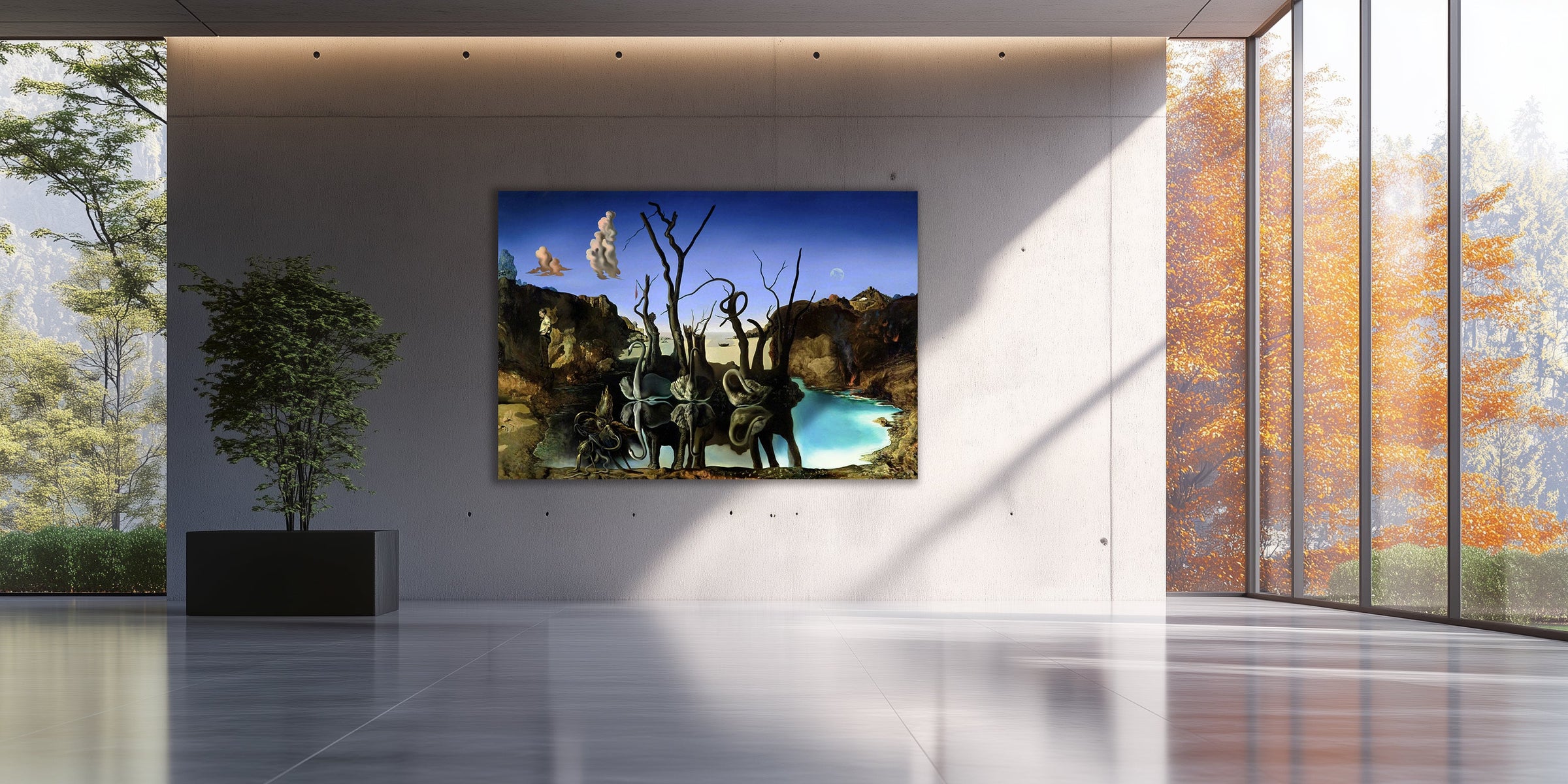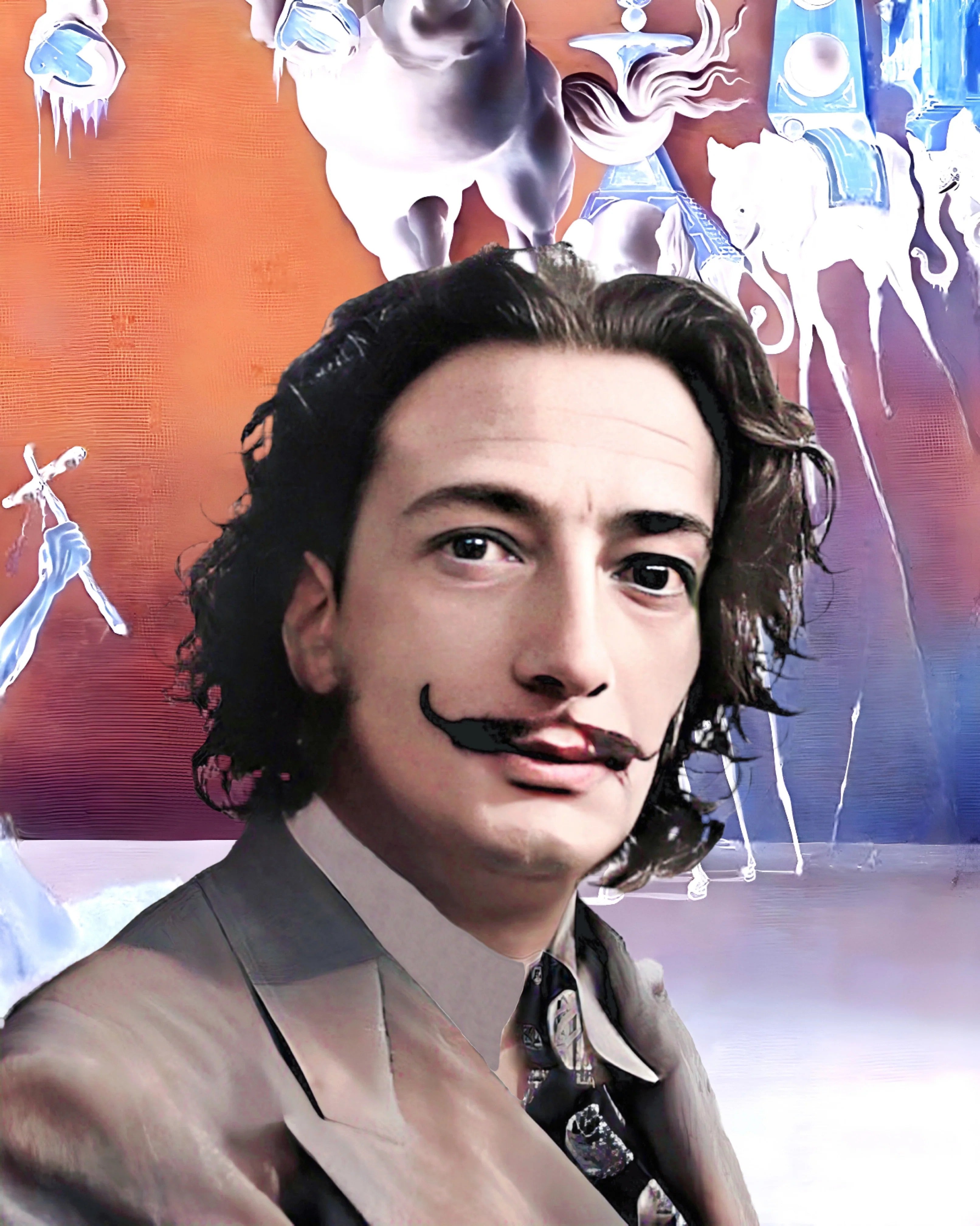
Salvador Dalí

Salvador Dalí, one of the most emblematic artists of surrealism, was born on May 11, 1904, in Figueres, Spain. From a young age, he showed an inclination for art and studied at the Royal Academy of Fine Arts of San Fernando in Madrid. His style was characterized by dreamlike images, disconcerting elements, and a meticulous technique influenced by the Renaissance masters. Dalí was deeply influenced by the surrealist movement led by André Breton, although his relationship with the group was complex and tumultuous.
Dalí developed the paranoiac-critical method, a technique he used to induce a state of paranoia and explore the subconscious, which was reflected in his works. Among his most famous paintings is "The Persistence of Memory" (1931), known for its melting clocks. This work, and many others, illustrate his ability to combine the real with the imaginary, creating mental landscapes that defy logic. His influence extended beyond surrealism, impacting movements such as pop art and artists like Andy Warhol.
Dalí maintained close relationships with other surrealists such as René Magritte and Paul Éluard, although their personalities often clashed. Magritte influenced Dalí through his use of everyday elements in unexpected contexts, while Éluard introduced him to the surrealist circles in Paris. Despite the tensions, Dalí contributed significantly to the spread of surrealism and the artistic exploration of the unconscious.
Dalí was also a master of personal marketing, using his extravagant personality to attract the attention of the public and the media. His marriage to Gala, a key figure in his life and work, was a constant source of inspiration and stability. Throughout his career, Dalí experimented with different media, including film, sculpture, and photography, collaborating with figures like Luis Buñuel and Alfred Hitchcock.
Salvador Dalí not only revolutionized surrealist art but also left an indelible mark on popular culture and contemporary art. His ability to merge the real and the unreal, along with his innovative paranoiac-critical method, positions him as a singular genius in the history of art.

